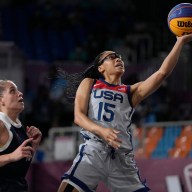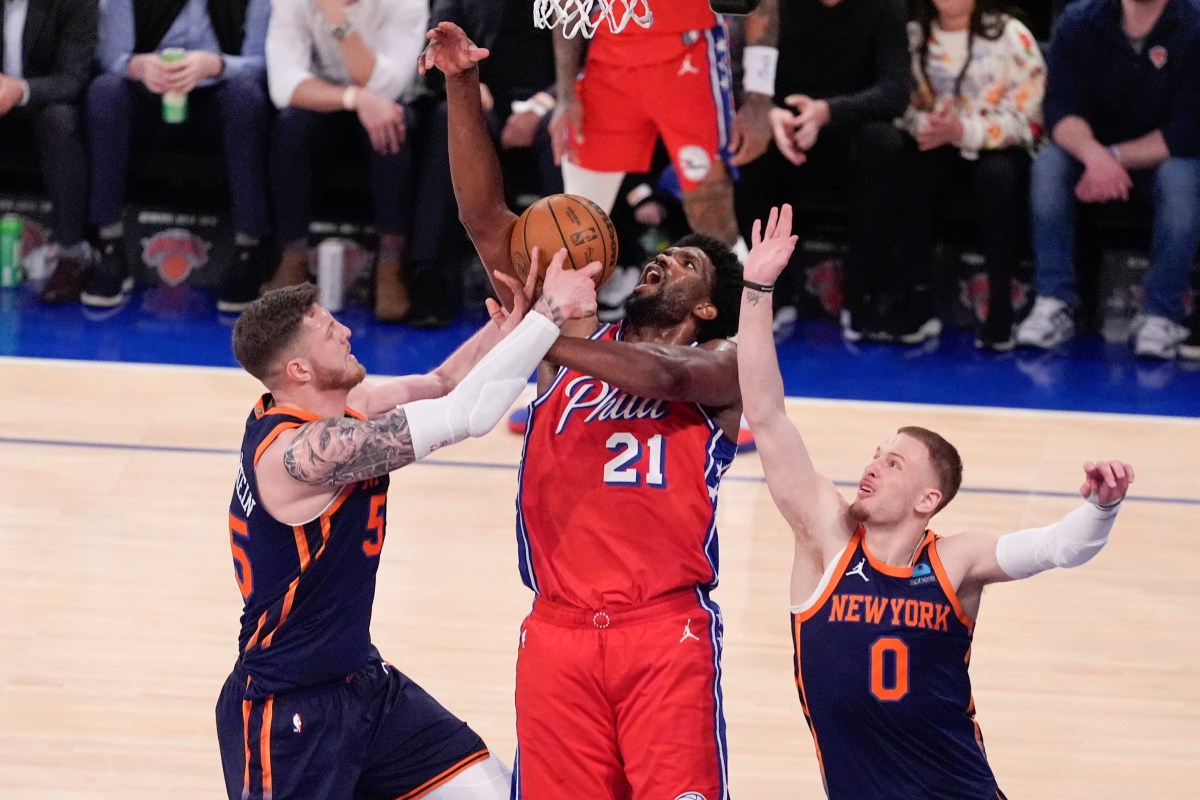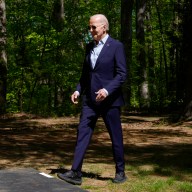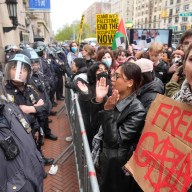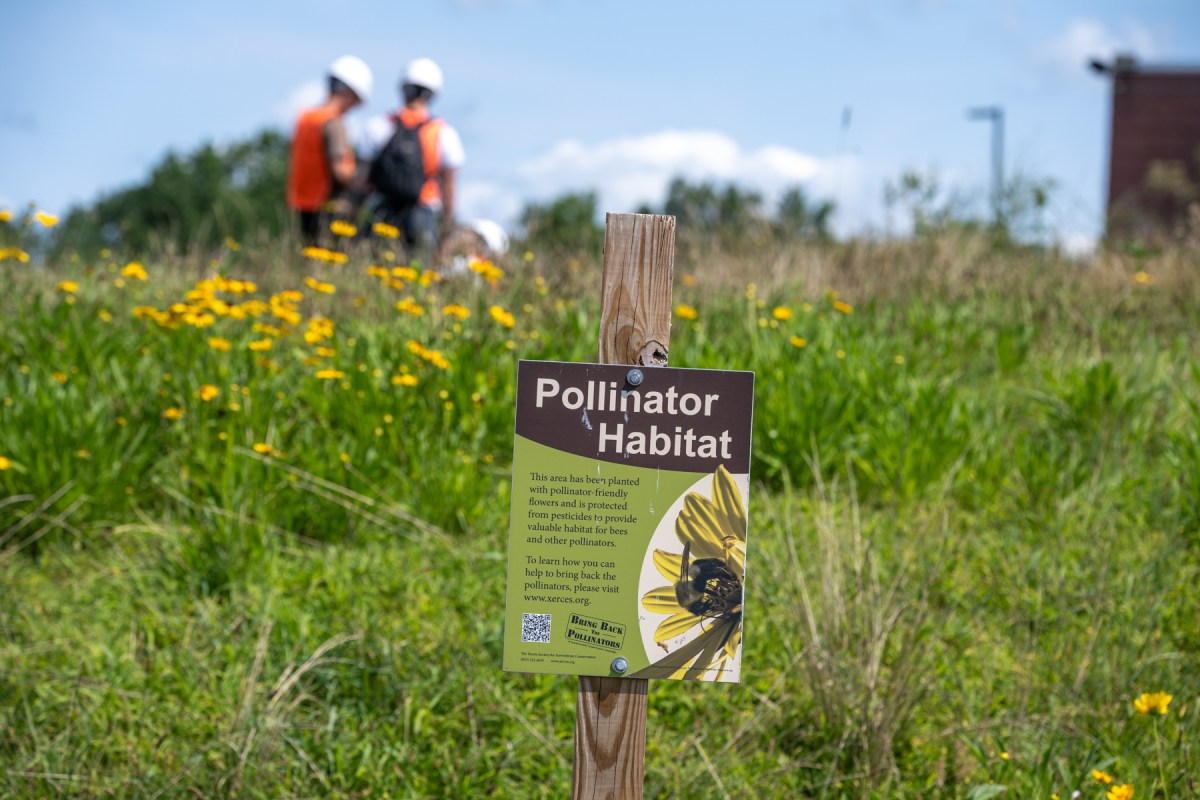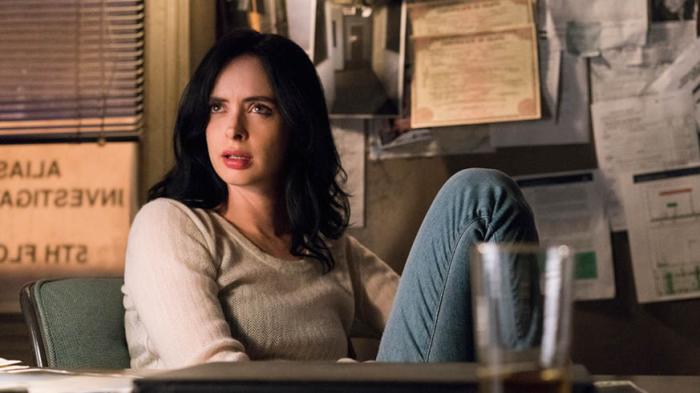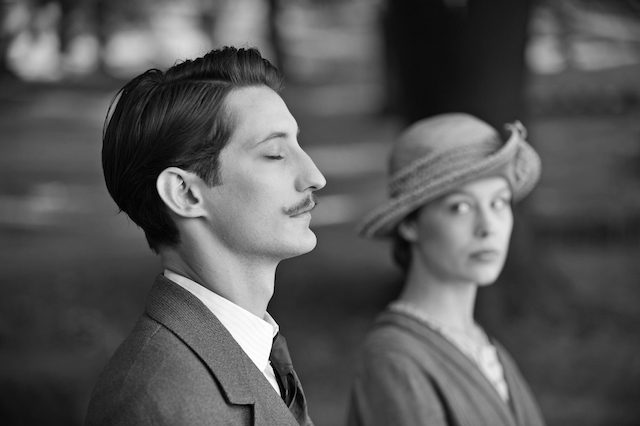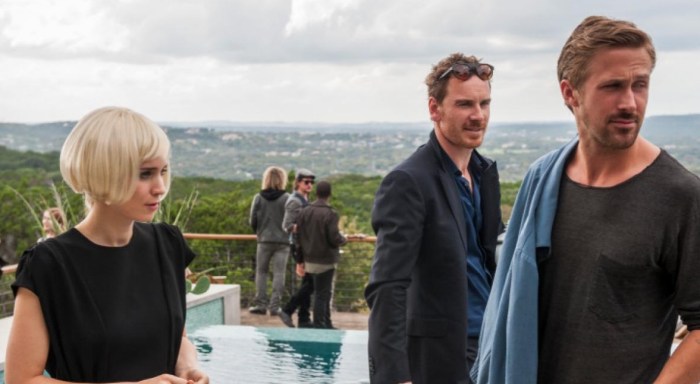‘The Good Dinosaur’ Earlier this year, Pixar released “Inside Out,” which, despite its loud colors and funny characters, seemed primarily aimed at adults. How do kids even process a movie whose very text concerns the death of childhood and the onslaught of neuroses, depression and existential dread? So take heed, because “The Good Dinosaur,” their second film of 2015, is very much for kids. It’s simple and direct, complete with a basic, repeatedly reiterated lesson about overcoming fear. In fact, there’s not even many of the usual Pixar jokes about its hero, young Arlo (voice of Rayond Ochoa), an apotasaurus born tiny and physically stunted. He’s grown into a scaredy cat dino, and his clumsiness and constant state of quivering fear is only occasionally played for laughs. In fact, his cowardice even causes the death of his macho father (Jeffrey Wright), who perishes early on, a la Bambi’s mom (or Superman’s dad). RELATED: “Creed” shows how to do “Rocky” and fan fiction right Arlo’s insecurity is challenged, of course: An accident sweeps him way downriver, far from home. He has to learn some token lessons about manning up, or at least make some friends, including a feral and savvy babbling caveboy (Jack Bright) he names Spot. (Note: This is set in an alternate world where dinosaurs weren’t wiped out. It still doesn’t make sense, as Neil deGrasse Tyson has pointed out, that early man would have evolved, but, you know, chill.) “The Good Dinosaur”’s simplicity doesn’t, mind you, make it lesser Pixar. Adults have been conditioned, most of all by the titanic animated house itself, to expect a certain level of emotional, even philosophical and definitely technical sophistication in toons ostensibly made for children. “The Good Dinosaur” is more modest. If its coming-of-age story engages with adults at all it’s in a way that taps into childhood fears — and sometimes quite brutally, in a way reminiscent of Pixar’s parent company Disney. It helps that Arlo feels like an actual kid. He’s voiced by one, not a superstar pretending to be a boy, and Ochoa (“Items or Less”) sounds genuinely scared and freaked and fragile. Combine that with Arlo’s bulging, sad eyes and his usually shaking body, and he’s a figure of primo pathos. He’s going to go through the usual business about gaining confidence and actualization, but his journey is baby steps, and Arlo doesn’t exactly go from zero to hero. The details of the plot seem old-hat but the way it plays is deeply felt. As ever it’s not the story but the way it’s told. The script — which was dramatically reworked so many times that the film was originally due two autumns back — doesn’t give Arlo and Spot too many obstacles, and most of the threats, like a clan of Tyrannosauruses, led by a reliably Sam Elliott-y Sam Elliott, prove benign, even friendly. But the lack of saturation and minimal humor makes it easier to get into this delicate, monstrous flower’s petrified headspace, to stick with him and not be distracted by busy bits of business. RELATED: “The Peanuts Movie” plays (almost) exactly like the old TV specials It also gives us plenty of time to gawk. We’re used to animated photo-realism, especially from Pixar, but the landscapes look absolutely real, even as the creatures themselves are lovingly, refreshingly exaggerated, yet still, somehow, don’t seem entirely apart from them. There’s beauty everywhere, especially in a pterodactyl attack that begins with black tails ominously piercing through thick clouds. Even better is a leftfield drug trip sequence that would rival “Dumbo”’s nightmarish “Elephants on Parade” for sheer batty creativity if it lasted longer than 30 seconds. But nothing is as striking as Arlo himself. (Ditto, it must be said, Spot, a rowdy freak who always seems feral, and who is rarely, interestingly, anthropomorphized, like most animated animals and creatures. This isn’t “The Croods.”) Arlo’s face is extremely expressive, and close-ups of him give the same kind of charge you get from watching old melodramas, or new ones like “The Immigrant,” “Brooklyn” and “Carol.” The face, even the animated dino face, is a thing of wonder.
Director: Peter Sohn
Voices of: Raymond Ochoa, Jack Bright
Rating: PG
4 (out of 5) Globes
‘The Good Dinosaur’ is the rare Pixar film mostly for kids
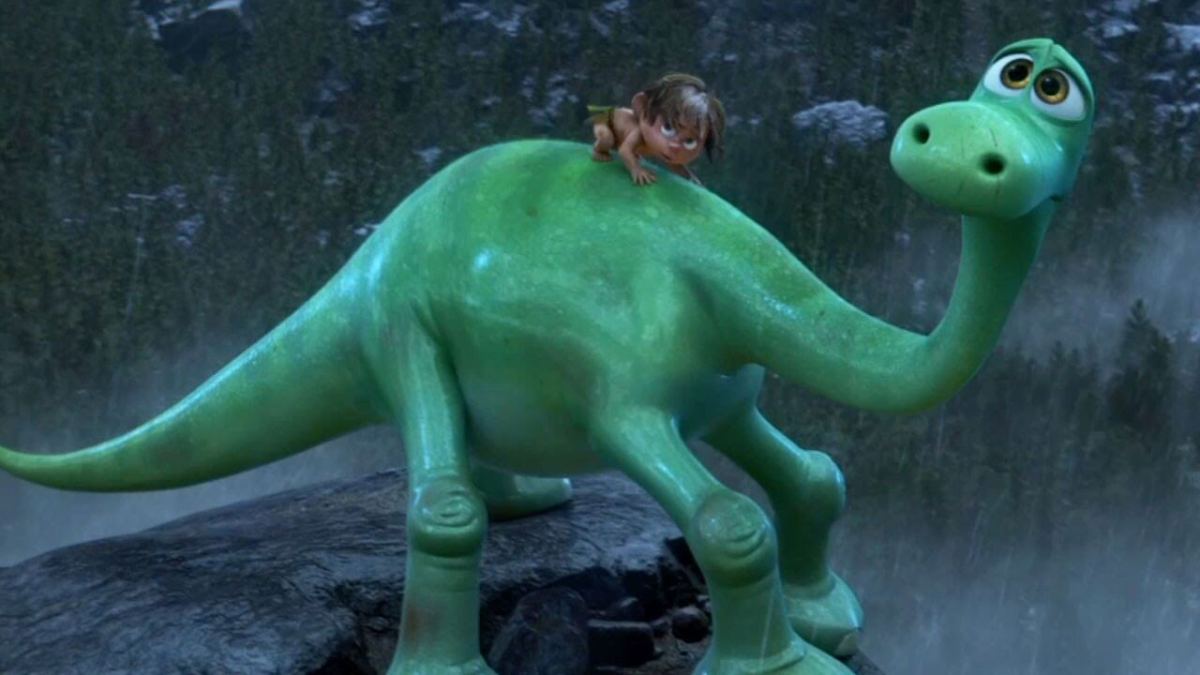
Pixar
Follow Matt Prigge on Twitter @mattprigge



